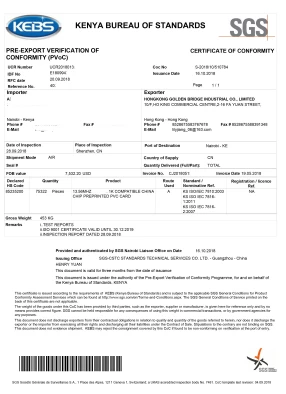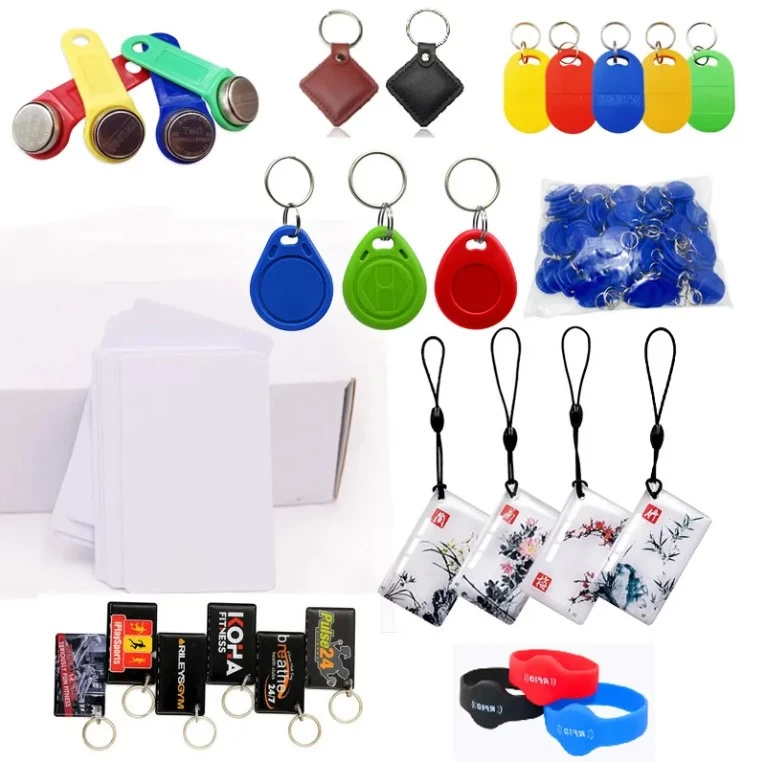RAIN Alliance research found that UHF IC sales reached 21 billion in 2020
This report studies the sales of tag ICs, inlays, tags, reader ICs, modules, readers and printer encoders. The report shows that RFID product sales in 2019 were US$2.2 billion, and it is expected to exceed US$5.1 billion in 2024. The report pointed out that the compound annual growth rate of label sales is expected to be 26%, which is conservatively estimated to increase from 17.7 billion in 2019 to 56.1 billion in 2024. The study found that in 2020, more than 262,000 readers will be shipped.
The RAIN Alliance has tracked the sales of RFID tag ICs every year for the past five years. When the first edition of its report was released this year, it also covered all UHF RFID technology sales, including readers and printers. Khalid said that the steady growth of ICs measured every year shows part of the trend in RFID technology. However, collecting relevant data on all hardware will provide more detailed information. Therefore, the alliance and VDC began to cooperate to conduct necessary research, and VDC also conducted interviews and research on alliance members in the spring and autumn of 2020. The research also includes a detailed analysis of the market model, classified by product type, including finished tags or transponders, fixed readers, handheld readers and printer encoders; it also examines the application of RFID in multiple industries and industries. , Applications and regional market trends. Due to the economic uncertainty brought about by the COVID-19 epidemic, the initial study was divided into the best and worst cases. The study found that in the past year, RFID product sales were close to the best situation predicted by partners in 2020. When it comes to the sales of RFID tags, the number of ICs or chips that power these tags has been steadily increasing. From about 5 billion IC sales in 2015, it has quadrupled to more than 20 billion in 2020. This growth is expected to accelerate in the future. The most optimistic scenario is that IC sales will reach 30 billion units this year and 83.7 billion units in 2024. The most conservative forecast is 58 billion units. Khalid said: "Despite the economic downturn, some companies have also said that 2020 is a great year for them." This is partly due to the growth of RFID tracking inventory applications in the retail industry and the use of RFID technology. Various new scenarios where applications become diversified. image For example, last year, the potential annual output of labeled food was 2 trillion yuan. So far, only 0.03% of the products have been electronically labeled. Other potential growth areas include the footwear and apparel industry, with 80 billion products, 16% of which are currently labeled; in the auto parts field, there are 603 billion, of which only 0.02% are labeled; and 900 are needed for package tracking. 100 million labels, so far, only 0.02% of labels have been affixed. Harid recalled that because this study was conducted during the worst period of the US economic recession, there were some doubts about the performance of RFID technology. "Last year I was not sure what would happen, but we were verified on the number of tags, which means that we learned the tracking results under the best conditions, which is really a surprise." The results show that despite the raging epidemic, companies are still deploying RFID to better manage their businesses during the epidemic. For example, retailers can use RFID tags to track the location of goods and their movement, and provide consumers with more flexibility in providing goods that can be purchased online. However, due to the outbreak of the epidemic, the deployment of RFID in some other industries such as the aviation industry has stalled in the past year. Although the requirements of the International Air Transport Association (IATA) should have allowed RFID baggage tracking to grow into a very impressive field during this period, with the reduction of air travel, this effort has actually ceased. These losses are not only offset by the retail industry, but also offset by the diversified application of RFID technology in other industries. For example, VDC analyst David Krebs (David Krebs) said that the medical and pharmaceutical industries are undergoing a large number of pilots or deployments. "They are looking for ways to track medicines, including not only the COVID-19 vaccine, but also other vaccines and drugs." Khalid added: “These trends are very positive and this is a very good industry. We are in a stage of very strong growth. RFID is gradually becoming popular, and other technologies are also competing in the field of positioning and ID automatic identification collection. Now RFID technology is very reliable." "A basic theme that can be confirmed in the research is that when COVID-19 has a huge impact on the retail industry, RFID technology, if used properly, will bring many benefits." Krebs said. RFID is a tool that can meet the ever-changing needs of consumers. The rapid shift of retailers to e-commerce and other retail channels is closely related to the capabilities of RFID. In addition, the study found that the application of passive UHF RFID surged last year. For example, the application of RFID in logistics and package handling has grown, and the catering industry is also conducting some RFID pilot projects, such as tracking and managing the freshness of food supplied to restaurants based on individual cases or trays. Although RFID applications have been implemented for many years, some deployments have been hindered due to technical and cost constraints. The current technology provides higher performance at a lower cost, which helps to promote the popularization of applications, and more audiences who benefit from RFID know where RFID is suitable for use. Sometimes, just say "Does it make sense for me to put a label on this item?" In addition, research also shows that RFID technology helps to promote the automation of manufacturing and logistics. Under the requirements of social isolation measures, the existence of RFID technology can reduce the requirements for the number of employees in warehouses. Krebs also said that companies have also changed their investment in reading equipment. Although stores have long been equipped with handheld devices, "but we have seen a shift towards fixed reader investment, so that the company's operations are more flexible." These readers include overhead readers, ceiling-mounted readers, desktop devices for point of sale, and access door readers for distribution centers. According to Khalid, the alliance may update its results at the end of this year or early 2022. "Of course, there may be research in a certain field in the future." He will focus on two areas of RFID growth. One is the field of food retail (especially fast food), where there are already many pilot data for managing food freshness; the other growth field is the medical industry, which aims to track medicines and consumables.


























